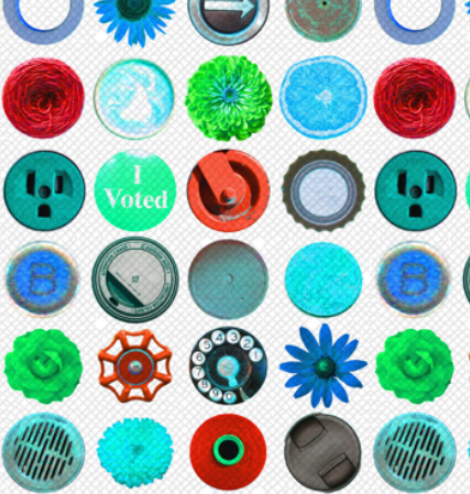Sometimes when I finish a piece of art, I’m not finished. The ideas or inspiration or designs are still in my head and they still have something to say. I think this is why many artists do things in a series, like Monet’s variations on haystacks. The piece itself might be done, but the art is still trying to say something.
This doesn’t happen to me often. Usually, I am done and ready to move on. But the art for the recent public art/utility box project that I did is one of those that stuck around and wouldn’t let me go. Before I had even finished up the final technical details of getting those pieces ready to be installed, I decided that I wanted to write a book.
The beautiful thing about making a book from this project was that most of the hard work was done. Because I was already making print ready files for sticky vinyl coverings, I already had high res files that were perfect for printing. And I had a lot of “leftover” photos. When I started the project for Prospect Park, I took about 500 photos so that I had options to work from. I wasn’t sure what I would need and I knew I didn’t want snowy winter pictures, so I shot a lot last fall.
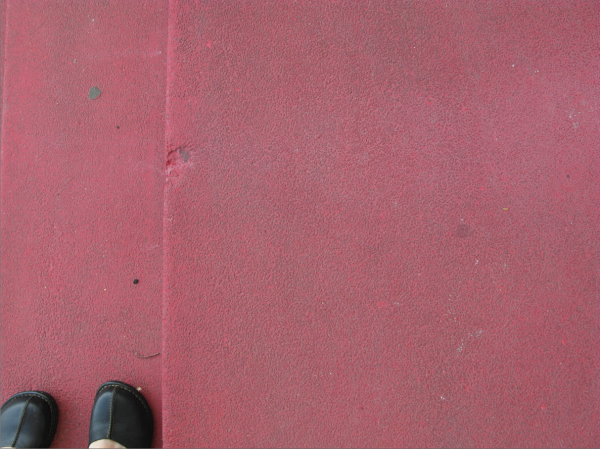 The story for the book I wrote at about 2 am one morning and it started with pictures of feet. The book has a very simple story; basically it’s about taking a walk with an artist and looking around you for art. Exactly what I did when I took the photos to make the collages. I realized that I had several photos that had my feet in them, because whatever I was photographing was on the ground. I was planning to just crop out my feet if I used those photos, but what better way to illustrate a walk and bring me into the story a little bit?
The story for the book I wrote at about 2 am one morning and it started with pictures of feet. The book has a very simple story; basically it’s about taking a walk with an artist and looking around you for art. Exactly what I did when I took the photos to make the collages. I realized that I had several photos that had my feet in them, because whatever I was photographing was on the ground. I was planning to just crop out my feet if I used those photos, but what better way to illustrate a walk and bring me into the story a little bit?
It’s a “kids book”, because I think there is a lot in it that kids would enjoy. Did you know that I snuck in a few pictures just for me? My dog, Leo, appears on one page. (I’ll give you a hint: it’s just his fur, and he’s wet.) There are lots of things to look for in the photos and I continued the I Spy game with thumbnails of things like colored pencils and faucet handles to look for in the photo collages.
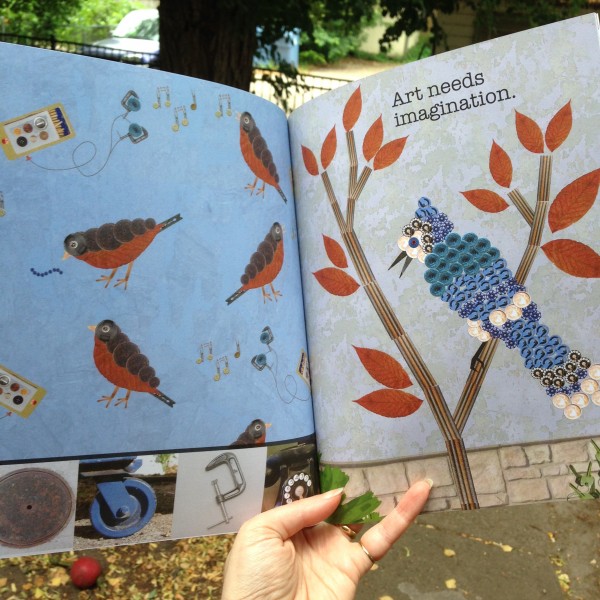
Of course, I would like to sell a few, but more importantly for me, I want people to know the story. How many times have you run into art out in the world that was without context? Sculptures in parks, murals, mosaics. There is rarely an artist’s name and there is almost never a story. And don’t you always have things that you wonder? Why are there whales painted on the wall under the bridge? What’s the story? There is something fun about making up your own story, but I am curious. I want to know the artist’s story. I want to know the connections and I want to make my own connections beyond just thinking “I like those whales.”
So this book has several different stories. It’s about the art that’s in the book. But I also included a page about the art that I made first, the art that’s on the boxes. If the world is kind to them, the installers tell me that those wraps can last for several years. And I hope people wonder about them and have questions. I wasn’t allowed to put my website on the boxes (lest it look like advertising) but maybe through the magic of Google, someone will be curious and find the story.
And don’t think I am forgetting about fabric in all of this. I collected lots of photos of circles, thinking I would use those for making some part of the designs. They didn’t make the final cut for the boxes, but I used them for the cover of the book and to design this fabric:
I made a dress from it to wear to the walking tour the neighborhood association did for the boxes. You can see a little bit of that here in the article that the local paper wrote about the project and it’s available at Spoonflower.
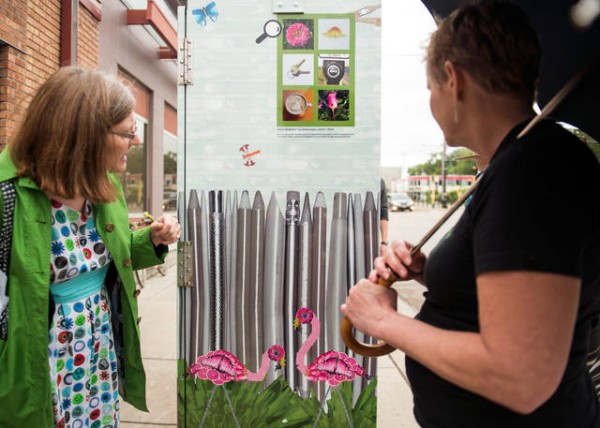
Members of the Prospect Park Association take a tour of utility boxes in the area that have been wrapped in art by local artists. The project was completed in an effort to stop graffiti and bring beauty to the neighborhood. – photo courtesy MN Daily
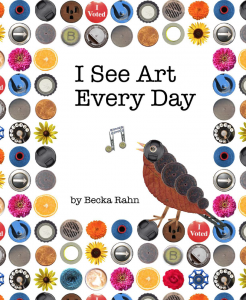
- At my Etsy shop (If you purchase this way, I am happy to autograph it.)
- Through Blurb.com (print-on-demand, shipped straight to you)
- in person at Hennepin History Museum, Textile Center or WI Museum of Quilts and Fiber Arts

